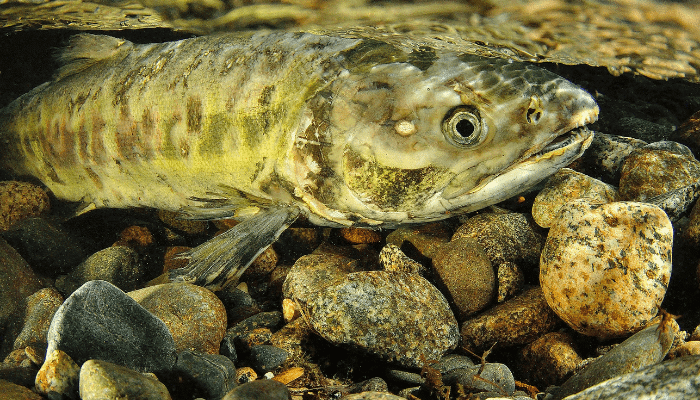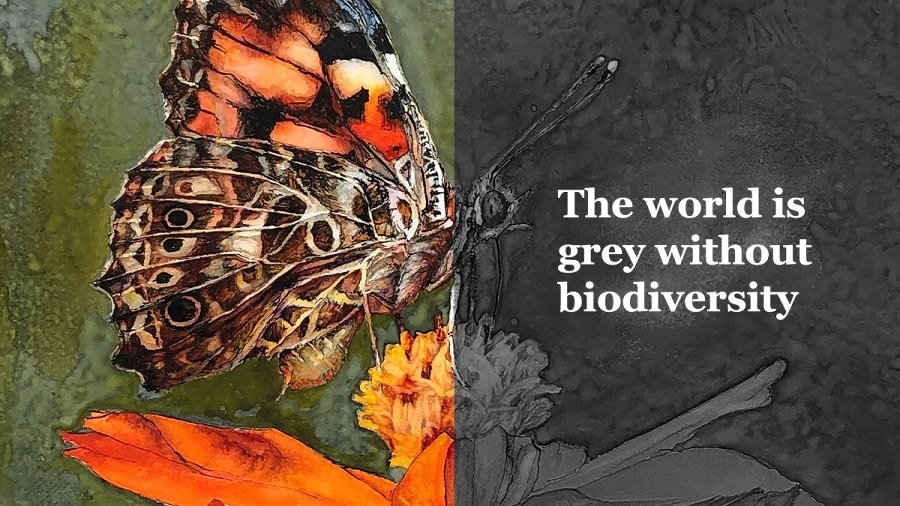As the wind strips the trees of their leaves and mushrooms surface through the rain-soaked ground, autumn takes hold along the Pacific Northwest of Canada. The changing season brings one of the most spectacular cycles of nature in the world. Hundreds of millions of salmon embark on a long and treacherous journey from the Pacific Ocean to their place of birth in the mountainous streams of British Columbia. The salmon run season is an important celebration for many British Columbians. We flock to streams across the province in the thousands to witness this natural wonder. And it never gets old, year after year. Trust me.

Chum Salmon. Photo by Eduardo Baena from Getty Images/Canva
I’m lucky enough to live close to Goldstream Park where I can catch a glimpse of thousands of chum salmon as they forge their way upstream. Not far from the busy road is the stone-packed stream where visitors congregate to catch a glimpse of one of nature’s greatest events. Nestled in an abundant old-growth forest filled with dew-covered ferns, mosses, Douglas firs, and western red cedars, Goldstream runs through an ancient and vital ecosystem on the traditional territory of the Malahat, Pauquachin, Tseycum, Tsartlip, and Tsawout First Nations.
Witnessing this spectacular yet meditative event for nearly every year of my life motivates me to share the magic of biodiversity and to communicate why it’s so important that we protect it.
The National Environmental Treasure (NET)
My name is Jaime and I manage communications and outreach for the National Environmental Treasure (NET), an environmental NGO based in Canada.
National Environmental Treasure (NET) is an environmental NGO based in Canada. We’re dedicated to educating and increasing the public’s understanding of the environment. Our current web-based biodiversity education program focuses on raising awareness of biodiversity loss along with solutions for its conservation. This program was kickstarted after the publication of the Biodiversity Action Agenda, which was co-authored by the Women for Nature network in autumn 2019.
NET highlights various biodiversity subjects on our blog, including the need for establishing more protected areas and how we can protect different species in Canada. We create educational videos on topics like the importance of leaf litter and how insects are impacted by light pollution. We also share content widely across our social media channels. But one of my favourite projects is our podcast hosted on Spotify. We explore the incredible world of biodiversity with many experts on subjects like soil biodiversity, protected areas, and the importance of nature in cities. The topic of biodiversity is incredibly fascinating, but given the alarming rate at which it’s disappearing, it can be pretty upsetting. That’s why our communication efforts focus on sharing solutions and inspiring action when possible.

NET campaign graphic. The world is grey without biodiversity. Together, let’s conserve the colours in our world. Watercolour by NET artist in residence, Leanne Cadden. Graphic designed by Chantelle Mussell.
Rethinking Science Communications
While the failure to adequately address biodiversity loss and climate change is a result of many issues, we believe the ways in which science has been communicated to the public and decision-makers over the years has contributed greatly to the planetary threats we now face. The environmental sector has often relied heavily on doom and gloom messaging over the years, which can disempower people and exacerbate experiences of climate apathy, grief, and despair. Messages of hope and tangible solutions are often omitted. As we face the sixth mass extinction, framing science in ways that are understandable, relatable, and empowering has never been more important.
So, where do we even begin? It’s an incredibly daunting task that can be overwhelming just to think about. When I feel this way, I often remind myself that even small acts can have a ripple effect. And the best place to start is through education and communication. Unlike traditional science communication methods, It’s important to provide audiences with the opportunity to respond, ask questions or participate. That’s why we experiment with different communication methods and adapt our messaging to suit the digital platforms with which we are using.
To more effectively reach new and existing audiences, we strive to frame science in ways that speak their ‘language’ and meet them on their digital platforms. To expand our communications beyond blogging, podcasting, Facebook, and YouTube, we started exploring how we could communicate biodiversity through bitesize media. Inspired by a BBC’s children’s education initiative, we’re testing how to briefly share facts about biodiversity in ways that are fun and engaging on Instagram and TikTok. We’re really enjoying making videos, recording voice-overs, and picking the perfect topic to explain in less than 30 seconds. Our plan is to eventually share our findings and lessons learned to help other organizations.
In joining ConservationNOW, our goal is to be part of a like-minded global community dedicated to conserving the environment. We’re always striving to learn more and to collaborate with other people and organizations, which is why we’re delighted to be one of the newest members of this thriving network. We hope to foster meaningful relationships and to learn from one another as we all strive to make a difference for nature.


